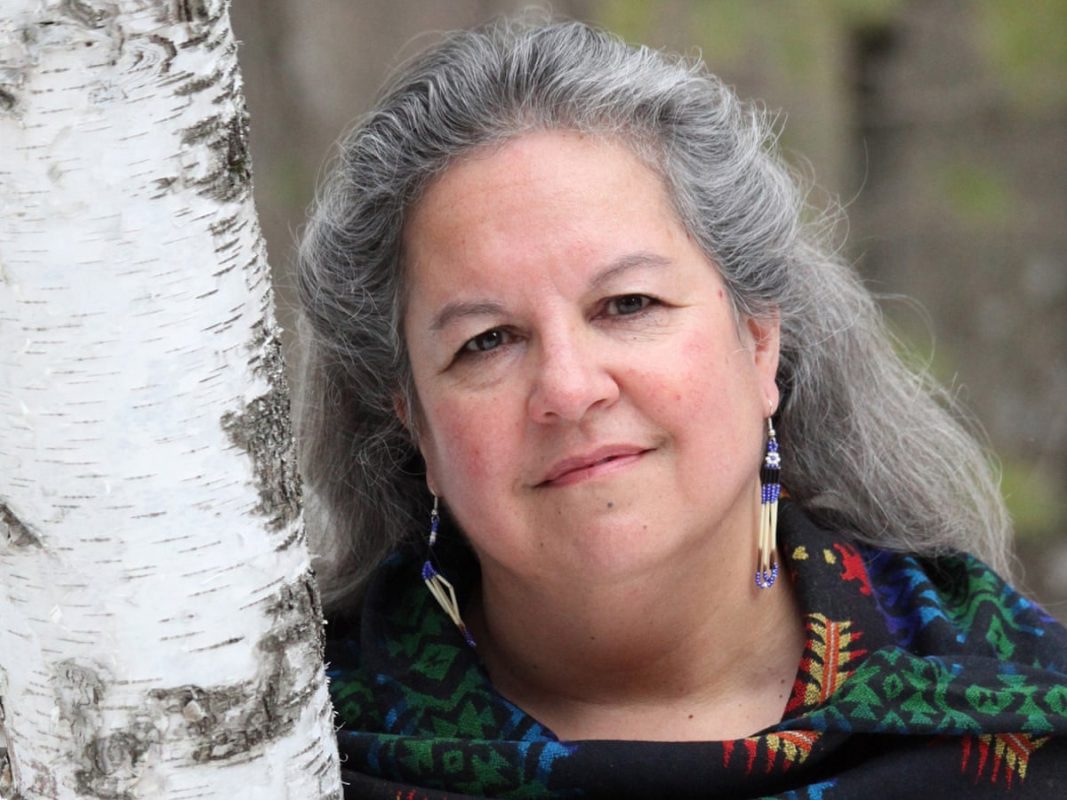
7 Takeaways from Robin Wall Kimmerer’s Talk on the Animacy of Nature
By Diane Richard
December 9, 2020—When Robin Wall Kimmerer was being interviewed for college admission, in upstate New York where she grew up, she had a question herself: Why do lavender asters and goldenrod look so beautiful together?
Her question was met with the condescending advice that she pursue art school instead. But Kimmerer, an enrolled member of the Citizen Potawatomi Nation, took her interest in the science of complementary colors and ran with it. The scowl she wore on her college ID card advertised a skepticism of Eurocentric systems that she has turned into a remarkable career. Since 1993, she has taught at her alma mater, the SUNY College of Environmental Science and Forestry, where she interrogates the Western approach to biology, botany, and ecology—and responds with Indigenous knowledge.
On December 4, she gave a talk hosted by Mia and made possible by the Mark and Mary Goff Fiterman Fund, drawing an audience of about 2,000 viewers—standing-Zoom only! It may have been the most popular talk ever held by the museum. Called “Learning the Grammar of Animacy: subject and object,” her presentation explored the difference between those two loaded lowercase words, which Kimmerer contends make all the difference in how many of us understand and interact with the environment.
In Western thinking, “subject”—namely, humankind—is imbued with personhood, agency, and moral responsibility. But “object”—the ecosystem—is not, making the latter ripe for exploitation. As Kimmerer says, “As if the land existed only for our benefit.”
In her talk, as in her book Braiding Sweetgrass: Indigenous Wisdom, Scientific Knowledge and the Teaching of Plants (Milkweed, 2013), Kimmerer argued that the earth and the natural world it supports are all animate beings: its waterways, forests and fields, rocks and plants, plus all creatures from fungus to falcons to elephants. As such, they deserve our care and respect. “Plants feed us, shelter us, clothe us, keep us warm,” she says. “Who else can take light, air, and water and give it away for free? They are models of generosity. They are our teachers.”
Here are seven takeaways from the talk, which you can also watch in full.
1) Names reflect the namer.
Carl Linnaeus is the so-called father of plant taxonomy, having constructed an intricate system of plant names in the 1700s. But Kimmerer contends that he and his successors simply overrode existing identities. In Anishinaabe and Cree belief, for example, the supernatural being Nanabozho listened to what nature’s elements called themselves, instead of stamping names upon them. (Again, object–subject.) Reclaiming names, then, is not just symbolic. When Minneapolis renamed its largest lake Bde Maka Ska (the Dakhota name for White Earth Lake), it corrected a historical wrong. “I teach that in my classes as an example of the … power of Indigenous place names to combat erasure of Indigenous history,” she says. “It’s so beautiful to hear Indigenous place names. They’re so evocative of the beings who lived there, the stories that unfolded there. Those names are alive.”
2. Children need more/better biological education.
Studies show that, on average, children recognize 100 corporate logos and only 10 plants. When we do recognize flora and fauna, it may be because advertisers have stuck a face on them—we can’t resist remaking the natural world in our image. Think: The Jolly Green Giant and his sidekick, Sprout. Says Kimmerer: “Our ability to pay attention has been hijacked, allowing us to see plants and animals as objects, not subjects.”
3. Knowledge takes three forms.
The three forms, according to Kimmerer, are Indigenous knowledge, scientific/ecological knowledge, and plant knowledge. Strength comes when they are interwoven, much as Native sweetgrass is plaited. “It’s not the land which is broken, but our relationship to land,” she says. “That’s the work of artists, storytellers, parents. We braid sweetgrass to come into right relationship.”
4. We “it” what we don’t know or understand.
When we see a bird or butterfly or tree or rock whose name we don’t know, we “it” it. “I would never point to you and call you ‘it.’ It would steal your personhood,” Kimmerer says. “‘It-ing’ turns gifts into natural resources. It gives us permission to see the land as an inanimate object. These beings are not ‘it,’ they are our relatives.”
5. Instead, consider using “ki” for singular or “kin” for plural.
This is Kimmerer’s invitation: be more respectful of the natural world by using “ki” and “kin” instead of “it.” These are variants of the Anishinaabe word “aki,” meaning earthly being. And if you’re concerned that this amounts to appropriation of Native ideas, Kimmerer says that to appropriate is to steal, whereas adoption of “ki” and “kin” reclaims the grammar of animacy, and is thus a gift.
6. The notion of being “low on the totem pole” is upside-down.
Those “low on the totem pole” are not less-than. Instead, beings depicted at the base of Pacific Northwest totem poles hold up the rest of life. It’s an honored position.
7. Native artworks in Mia’s galleries might be lonely now.
Kimmerer, who never did attend art school but certainly knows her way around Native art, was a guiding light in the creation of the Mia-organized 2019 exhibition “Hearts of Our People: Native Women Artists.” She notes that museums alternately refer to their holdings as artworks or objects, and naturally prefers the former. She says the artworks in the galleries, now dark because of Covid-19, are “not static objects. I think how lonely they must be. The drums can’t sing.”
